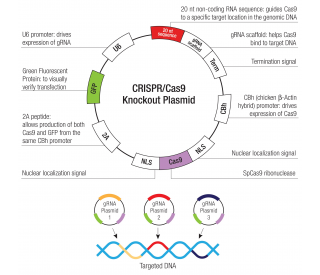Species Reactivity
Human
Specificity
Detects human LILRB2/CD85d/ILT4 in direct ELISAs and Western blots. In direct ELISAs and Western blots, no cross-reactivity with recombinant human (rh) ILT1, rhILT2, rhILT3, rhILT6, rhILT7, rhILT11, rhLIR6 or rhLIR8 is observed.
Source
Monoclonal Mouse IgG 2A Clone # 287219
Purification
Protein A or G purified from hybridoma culture supernatant
Immunogen
Mouse myeloma cell line NS0-derived recombinant human LILRB2/CD85d/ILT4
Gly24-His458
Accession # ACT64556Formulation
Lyophilized from a 0.2 μm filtered solution in PBS with Trehalose. *Small pack size (SP) is supplied as a 0.2 µm filtered solution in PBS.
Endotoxin Level
<0.10 EU per 1 μg of the antibody by the LAL method.
Label
Unconjugated
Applications
Recommended
ConcentrationSample
Western Blot
1 µg/mL
Recombinant Human LILRB2/CD85d/ILT4 Fc Chimera (Catalog # )
under non-reducing conditions onlyFlow Cytometry
0.25 µg/10 6 cells
See below
CyTOF-ready
Ready to be labeled using established conjugation methods. No BSA or other carrier proteins that could interfere with conjugation.
Neutralization
Measured by its ability to neutralize LILRB2/CD85d/ILT4-mediated adhesion of the HSB2 human peripheral blood acute lymphoblastic leukemia cell line. The Neutralization Dose (ND 50) is typically 0.2-0.8 µg/mL in the presence of 35 µg/mL Recombinant Human LILRB2/CD85d/ILT4 Fc Chimera.
Please Note: Optimal dilutions should be determined by each laboratory for each application. are available in the Technical Information section on our website.
Data Examples
Flow Cytometry | Detection of LILRB2/CD85d/ILT4 in Human Blood Monocytes by Flow Cytometry. Human peripheral blood monocytes were stained with Mouse Anti-Human CD14 PE‑conjugated Monoclonal Antibody (Catalog # ) and either (A) Mouse Anti-Human LILRB2/CD85d/ILT4 Monoclonal Antibody (Catalog # MAB2078) or (B) Mouse IgG2A Isotype Control (Catalog # ) followed by Allophycocyanin-conjugated Anti-Mouse IgG Secondary Antibody (Catalog # ). |
Neutralization | Cell Adhesion Mediated by LILRB2/CD85d/ILT4 and Neutralization by Human LILRB2/CD85d/ILT4 Antibody. Recombinant Human LILRB2/CD85d/ILT4 Fc Chimera (Catalog # ), immobilized onto a microplate, supports the adhesion of the HSB2 human peripheral blood acute lymphoblastic leukemia cell line in a dose-dependent manner (orange line). Adhesion elicited by Recombinant Human LILRB2/CD85d/ILT4 Fc Chimera (35 µg/mL) is neutralized (green line) by increasing concentrations of Mouse Anti-Human LILRB2/CD85d/ILT4 Monoclonal Antibody (Catalog # MAB2078). The ND50 is typically 0.2-0.8 µg/mL. |
Preparation and Storage
Reconstitution
Reconstitute at 0.5 mg/mL in sterile PBS.
Shipping
The product is shipped at ambient temperature. Upon receipt, store it immediately at the temperature recommended below. *Small pack size (SP) is shipped with polar packs. Upon receipt, store it immediately at -20 to -70 °C
Stability & Storage
Use a manual defrost freezer and avoid repeated freeze-thaw cycles.
12 months from date of receipt, -20 to -70 °C as supplied.
1 month, 2 to 8 °C under sterile conditions after reconstitution.
6 months, -20 to -70 °C under sterile conditions after reconstitution.
Background: LILRB2/CD85d/ILT4
The immunoglobulin-like transcript (ILT) comprise a family of activating and inhibitory type immunoreceptors whose genes are located in the same locus that encodes killer cell Ig-like receptors (KIR) (1‑3). ILT4, also known as LIR-2 and LILRB2, is a type I transmembrane protein expressed primarily on monocytes and dendritic cells (DC) (4). Human ILT4 is produced as a 598 amino acid (aa) precursor including a 21 aa signal sequence, a 440 aa extracellular domain (ECD), a 21 aa transmembrane segment, and a 116 aa cytoplasmic domain. The ECD contains four Ig-like domains, and the cytoplasmic domain contains three immunoreceptor tyrosine-based inhibitory motifs (ITIM) (5). The ECD of human ILT4 shares 76% aa identity with chimpanzee ILT4 and 74%, 81%, 33%, 52%, 77%, 61%, and 64 % aa identity with human ILT1, 2, 3, 5, 6, 7, and 8, respectively. ILT4 binds to classical MHC I proteins as well as the non-classical HLA-G1 and HLA-F molecules (5‑9). It competes with CD8 alpha for MHC I binding but does not compete with KIR2DL1 (7). Ligation of ILT4 induces Tyr phosphorylation within its cytoplasmic ITIMs, a requirement for association with SHP-1 (4, 6). Activation of ILT4 inhibits signaling through Fc gamma RI (4) and Fc epsilon RI (6) and causes DC to become tolerogenic by downregulation of costimulatory molecules (10, 11). ILT4 mediates tolerogenic DC-induced CD4+ T cell energy in vitro and in vivo (10‑12).
References:
Suciu-Foca, N. et al. (2005) Int. Immunopharmacol. 5:7.
Hofmeister, V. and E.H. Weiss (2003) Semin. Canc. Biol. 13:317.
Hunt, J.S. et al. (2005) FASEB J. 19:681.
Finger, N.A. et al. (1998) Eur. J. Immunol. 28:3423.
Borges, L. et al. (1997) J. Immunol. 159:5192.
Colonna, M. et al. (1998) J. Immunol. 160:3096.
Shiroishi, M. et al. (2003) Proc. Natl. Acad. Sci. 100:8856.
Lepin, E.J.M. et al. (2000) Eur. J. Immunol. 30:3552.
Allen, R.L. et al. (2001) J. Immunol. 167:5543.
Chang, C.C. et al. (2002) Nat. Immunol. 3:237.
Ristich, V. et al. (2005) Eur. J. Immunol. 35:1133.
Manavalan, J.S. et al. (2003) Transpl. Immunol. 11:245.
Long Name:
Leukocyte Immunoglobulin-like Receptor, Subfamily B (with TM and ITIM Domains), Member 5
Entrez Gene IDs:
10288 (Human)
Alternate Names:
CD85 antigen-like family member D; CD85d antigen; CD85d; Ig-like transcript 4; ILT4; ILT-4; ILT4CD85d; Immunoglobulin-like transcript 4; Leukocyte immunoglobulin-like receptor 2; leukocyte immunoglobulin-like receptor subfamily B member 2 soluble isoform; leukocyte immunoglobulin-like receptor subfamily B member 2; leukocyte immunoglobulin-like receptor, subfamily B (with TM and ITIM domains); LILRB2; LIR2; LIR2CD85D; LIR-2subfamily A (with TM domain), member 6; member 2; MIR10; MIR10LILRA6; Monocyte/macrophage immunoglobulin-like receptor 10










